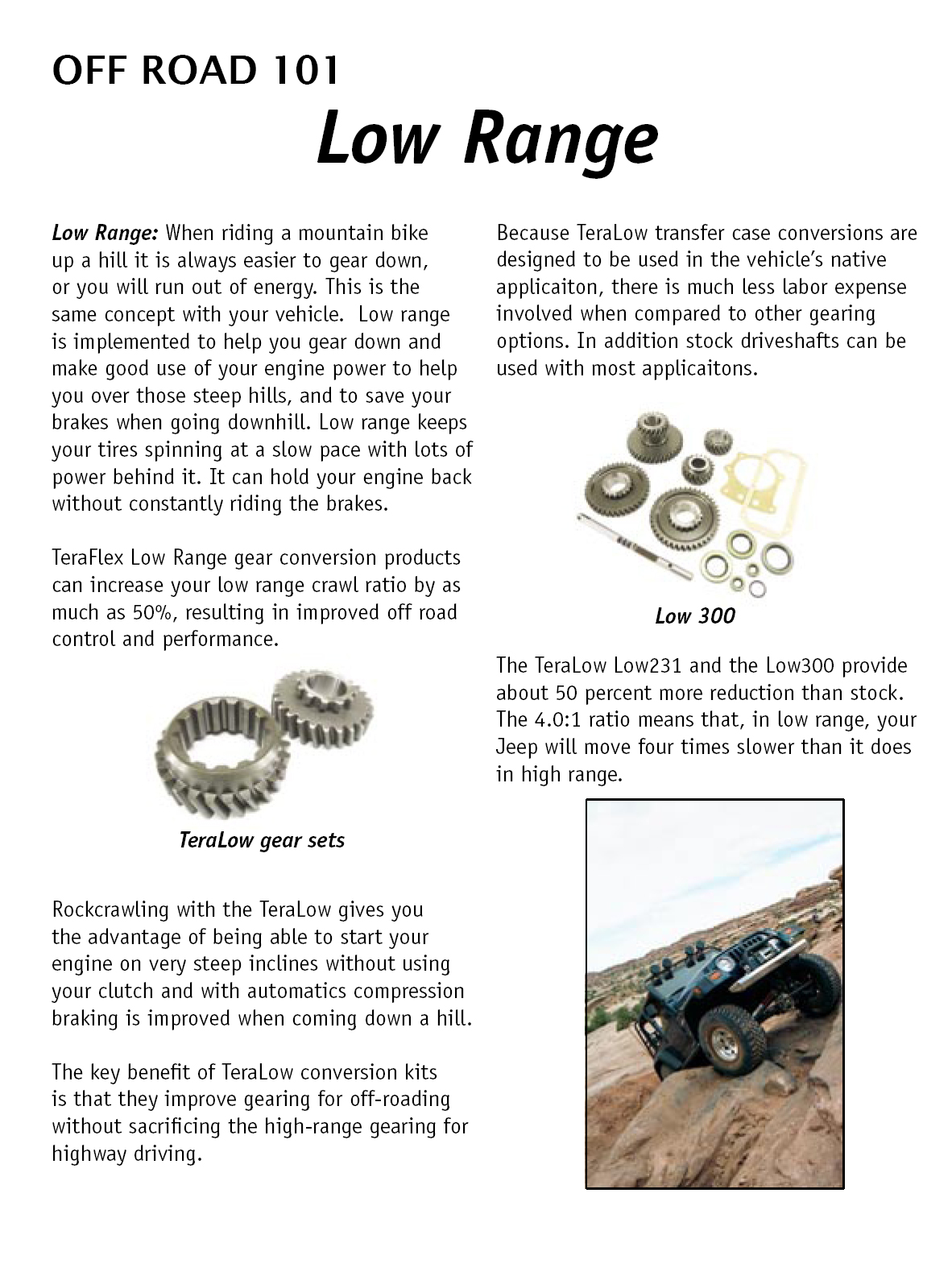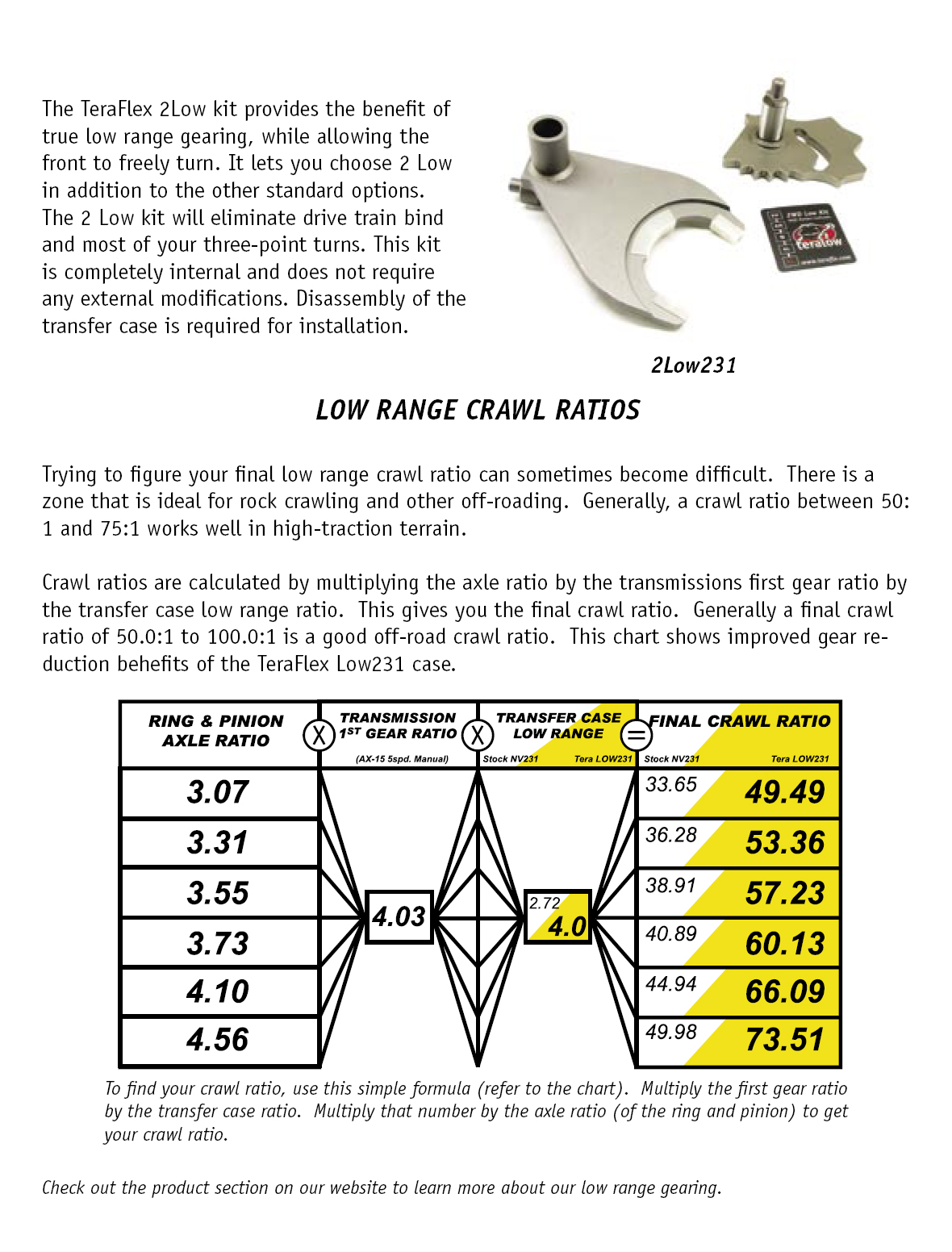

When riding a mountain bike up a hill it is always easier to gear down, or you will run out of energy. This is the same concept with your vehicle. Low range is implemented to help you gear down and make good use of your engine power to help you over those steep hills, and to save your brakes when going downhill. Low range keeps your tires spinning at a slow space with lots of power behind it. It can hold your engine back without constantly holding the brakes.
TeraFlex Low Range gear conversion products can increase your low range crawl ratio by as much as 50%, resulting in improved off road control and performance.
Rockcrawling with the TeraLow gives you the advantage of being able to start your engine on very steep inclines without usuing your clutch and with automatics compression braking is improved when coming down a hill.
The key benefit of TeraLow conversion kits is that they improve gearing for off-roading without sacrificing the high-range gearing for highway driving.
The TeraFlex 2Low kit provides the benefit of true low range gearing, while allowing the front to freely turn. It lets you choose 2 Low in addition to the other standard options. The 2 Low kit will eliminate drive train bind and most of your three-point turns. This kit is completely internal and does not require any external modifications. Disassembly of the transfer case is required for installation.
Because TeraLow transfer case conversions are designed to be used in the vehicle's native application, there is much less labor expense involved when compared to other gearing options. In addition stock driveshafts can be used with most applications.
The TeraLow Low231 and the Low300 provide about 50% more reduction than stock. The 4.0:1 ratio means that, in low range, your Jeep will move four times slower than it does in high range.












